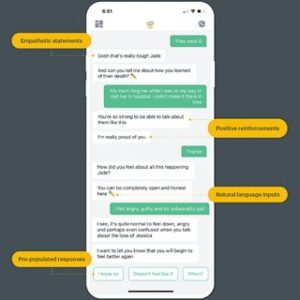Despite being discovered by Alois Alzheimer almost 120 years ago, Alzheimer’s Disease (AD) still remains incurable (Hippius & Neundörfer, 2003). AD causes the brain to break down over time, which is also known as neurodegeneration. AD begins by deterioration of the hippocampus, which is the part of the brain responsible for memory and emotion. It then slowly spreads to other parts of the brain, eventually breaking apart the brain stem, which is responsible for involuntary movements such as breathing and swallowing (Lee et al., 2015). Given that around 39 million people have Alzheimer’s worldwide and that this disease has a 100% fatality rate, scientists across the world have tried to find a cure to this ravaging disease (World Health Organization, 2023). While there is yet to be a cure, recent developments by Stephanie Langella could help with mitigating one of the earliest signs of Alzheimer’s: depressive symptoms.
In this study, Langella and her team studied Presenilin-1 (PSEN1) gene mutations, a major cause of early-onset Alzheimer’s Disease. The PSEN1 gene provides instructions for making the presenilin-1 protein. This protein is an essential part of a protein complex known as gamma-secretase. This complex cleaves toxic proteins such as the amyloid precursor protein (APP) to create nontoxic proteins. When the PSEN1 gene mutates, gamma-secretase struggles to form and break down these toxic proteins, causing APP molecules to join together to create amyloid-beta (also known as amyloid-ꞵ or A-ꞵ), the protein responsible for the neurodegeneration seen in Alzheimer’s Disease (Bagaria et al., 2022).

A figure of gamma-secretase, APP processing, and generation of Amyloid-β (Aβ). Cleavages of C99 by gamma secretase (ε/ζ/γ) release sAPPβ, a type of APP which is beneficial to cells. When the PSEN1 gene mutates, gamma secretase (γ) produces AICD, a harmful type of APP, into a cell’s liquid (cytosol) and amyloid-β 37-43 into cell organelles. Aβ42 is the form of amyloid-β responsible for neurodegeneration in AD patients. (Steiner et al., 2018).
In particular, they studied its relationship to the neurodegeneration of the hippocampus and depressive symptoms (Langella et al., 2023). They began by creating two groups: the first group consisted of carriers of the PSEN1 mutation but that had not yet been diagnosed with AD, and the second group consisted of the family members of the respective PSEN1 carriers that did not have the mutation and were not diagnosed with Alzheimer’s. Then, two structural MRIs – a method of neuroimaging which models the brain structures of a patient– with a one-year gap in between the two images were taken of the participants’ hippocampuses to measure the change in the volume of the hippocampus over a year. Participants also took the Geriatric Depression Scale, a 15-item survey that measures depressive symptoms, such as the subjects’ feelings of hopelessness and rating their interest in hobbies, to measure depressive symptoms over one year.
Once the study was concluded, Langella found that there was no significant difference in the severity of the depressive symptoms between those carrying the PSEN1 mutation and those that did not. However, within the group carrying the PSEN1 mutation, those with smaller hippocampal volumes experienced more depressive symptoms. This association remained even after accounting for the age differences in the participants. This same association was not present in the non-PSEN1 carriers (Langella et al., 2023). Since the volume of the hippocampus did not have any relationship with depressive symptoms with non-PSEN1 carriers, there is likely some relationship between Alzheimer’s and depressive symptoms caused by hippocampal neurodegeneration.

A). Structural MRI of the hippocampus from the back of the head (shown in yellow)
C). Top-down structural MRI of the hippocampus (shown in yellow) (Sato et al., 2021)
There are several important implications of this research. To start, if there is indeed a relationship between the severity of depressive symptoms and the size of the hippocampus in someone with AD, there is a chance that trying to mitigate these depressive symptoms through therapy and antidepressant medication could slow down the deterioration of the hippocampus. By keeping the hippocampus intact for a longer time, people with AD could have better emotional control and memory later in life, which would greatly improve their quality-of-life (Langella et al., 2023). Also, since AD first deteriorates the hippocampus, it is possible that the onset of depressive symptoms in people with the PSEN1 mutation could be used as an indicator to doctors on the severity of the neurodegeneration. For instance, if someone with the PSEN1 gene mutation suddenly begins displaying depressive symptoms, it is possible that AD has just recently started decaying the hippocampus. Doctors can then try to intervene and slow the decay of the hippocampus through administering antidepressants and therapy, but also through encouraging lifestyle changes such as increased exercise. This way, those with Alzheimer’s can live a longer time before their hippocampus fully degrades, letting them keep their memories for a longer time.
Since this is one of the first studies relating depression and hippocampal decay in people with PSEN1 mutations, there is no theorized mechanism behind why this relationship exists in people with the PSEN1 mutation but not in those without. However, Langella et al. did find a particularly strong association between hippocampal decay in those with the PSEN1 mutation and displaying apathy, one of the measured depressive symptoms in the study (2023). More research should be done on the potential role of certain depressive symptoms on hippocampal decay, along with more research on the neural underpinnings relating the PSEN1 mutation, depression symptoms, and hippocampal decay. There is some evidence linking the formation of amyloid-ꞵ to depression in late-life major depression, but further research into the mechanism underlying this relationship is required (Pomara et al., 2022).
However, there is a pressing issue with this study; it had a fairly small sample size, with the PSEN1 carrier group having 27 participants and the non-PSEN1 group having 26. Since AD is a disease that affects everyone slightly differently, having such a small sample size makes the results unreliable and hard to generalize to everyone with AD. Regardless of the issues in the study, developments such as the ones created by this study serve to improve the quality of life and life expectancy of people with AD, which promises to improve the lives of almost 39 million people and their families. With every passing discovery into Alzheimer’s, scientists are also getting more information on the mechanisms behind the disease, which could eventually lead humanity to curing the disease altogether.
Citations
Bagaria, J., Bagyinszky, E., & An, S. S. A. (2022). Genetics, Functions, and Clinical Impact of Presenilin-1 (PSEN1) Gene. International journal of molecular sciences, 23(18), 10970. https://doi.org/10.3390/ijms231810970
Hippius, H., & Neundörfer, G. (2003). The discovery of Alzheimer’s disease. Dialogues in clinical neuroscience, 5(1), 101–108. https://doi.org/10.31887/DCNS.2003.5.1/hhippius
Langella S, Lopera F, Baena A, et al. Depressive symptoms and hippocampal volume in autosomal dominant Alzheimer’s disease. Alzheimer’s Dement. 14 Oct. 2023, 986–994. https://doi.org/10.1002/alz.13501
Lee, J. H., Ryan, J., Andreescu, C., Aizenstein, H., & Lim, H. K. (2015). Brainstem morphological changes in Alzheimer’s disease. Neuroreport, 26(7), 411–415. https://doi.org/10.1097/WNR.0000000000000362
Pomara, N., Bruno, D., Plaska, C.R. et al. Plasma Amyloid-β dynamics in late-life major depression: a longitudinal study. Transl Psychiatry 12, 301 (2022). https://doi.org/10.1038/s41398-022-02077-8
Sato, Jinya, et al. “Lower Hippocampal Volume in Patients with Schizophrenia and Bipolar Disorder: A Quantitative MRI Study.” Journal of Personalized Medicine, vol. 11, no. 2, 13 Feb. 2021, p. 121, https://doi.org/10.3390/jpm11020121.
Steiner, H., Fukumori, A., Tagami, S., & Okochi, M. (2018, October 28). Making the final cut: Pathogenic amyloid-β peptide generation by γ-secretase. The Journal of Cellular Pathology. https://www.cell-stress.com/researcharticles/making-the-final-cut-pathogenic-amyloid-%ce%b2-peptide-generation-by-%ce%b3-secretase
World Health Organization. “Dementia.” Dementia, 2023, www.who.int/news-room/fact-sheets/detail/dementia.


